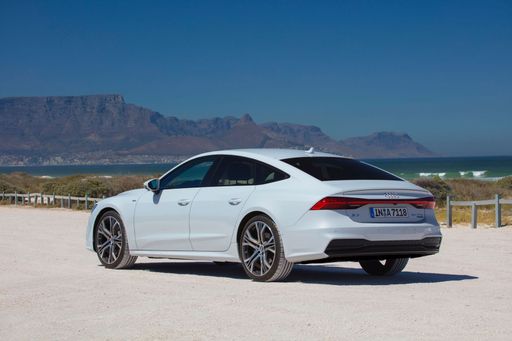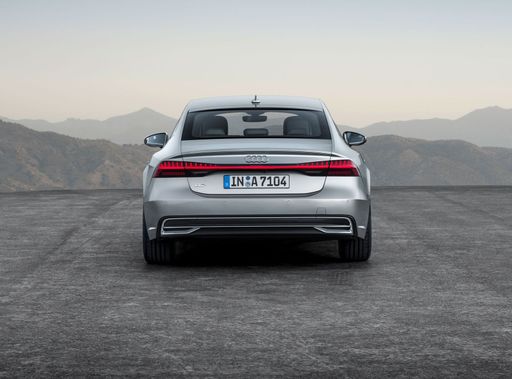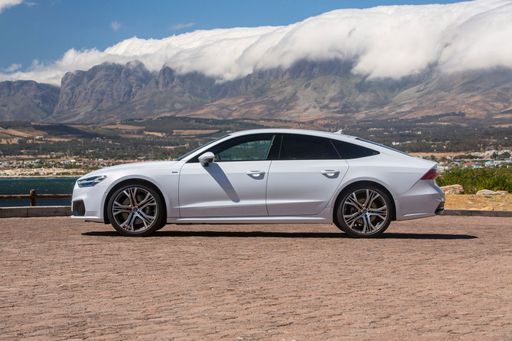Alfa Romeo Junior vs Audi A7 – Which car suits you better?
Two cars, one duel: Alfa Romeo Junior meets Audi A7.
Which one wins in performance, efficiency and value for money? Find out now!
Costs and Efficiency:
Price and efficiency are often the first things buyers look at. Here it becomes clear which model has the long-term edge – whether at the pump, the plug, or in purchase price.
Alfa Romeo Junior has a clearly advantage in terms of price – it starts at 25700 £, while the Audi A7 costs 55000 £. That’s a price difference of around 29357 £.
Fuel consumption also shows a difference: Audi A7 manages with 1.20 L and is therefore significantly more efficient than the Alfa Romeo Junior with 4.80 L. The difference is about 3.60 L per 100 km.
As for range, the Alfa Romeo Junior performs clearly better – achieving up to 410 km, about 342 km more than the Audi A7.
Engine and Performance:
Under the bonnet, it becomes clear which model is tuned for sportiness and which one takes the lead when you hit the accelerator.
When it comes to engine power, the Audi A7 has a clearly edge – offering 630 HP compared to 280 HP. That’s roughly 350 HP more horsepower.
In acceleration from 0 to 100 km/h, the Audi A7 is decisively quicker – completing the sprint in 3.40 s, while the Alfa Romeo Junior takes 5.90 s. That’s about 2.50 s faster.
In terms of top speed, the Audi A7 performs evident better – reaching 280 km/h, while the Alfa Romeo Junior tops out at 206 km/h. The difference is around 74 km/h.
There’s also a difference in torque: Audi A7 pulls decisively stronger with 850 Nm compared to 345 Nm. That’s about 505 Nm difference.
Space and Everyday Use:
Whether family car or daily driver – which one offers more room, flexibility and comfort?
Seats: Alfa Romeo Junior offers somewhat more seating capacity – 5 vs 4.
In curb weight, Alfa Romeo Junior is clearly perceptible lighter – 1380 kg compared to 1770 kg. The difference is around 390 kg.
In terms of boot space, the Audi A7 offers distinct more room – 535 L compared to 415 L. That’s a difference of about 120 L.
In maximum load capacity, the Audi A7 performs barely noticeable better – up to 1390 L, which is about 110 L more than the Alfa Romeo Junior.
When it comes to payload, Audi A7 evident takes the win – 600 kg compared to 420 kg. That’s a difference of about 180 kg.
Who comes out on top?
Overall, the Audi A7 shows itself to be wins the duel decisively and secures the title of DriveDuel Champion.
It convinces with the more balanced overall package and proves to be the more versatile choice for everyday use.
 @ Audi AG
@ Audi AG
Audi A7
Alfa Romeo Junior
The Alfa Romeo Junior captures the essence of Italian design with its sleek lines and compact dimensions, making it an icon of elegance and performance. With a spirited driving experience and a charming retro aesthetic, it appeals to enthusiasts and casual drivers alike. This delightful car embodies the brand's rich heritage while remaining a fun and engaging option for those seeking a unique automotive experience.
details @ Alfa Romeo / Stellantis Media
@ Alfa Romeo / Stellantis Media
 @ Alfa Romeo / Stellantis Media
@ Alfa Romeo / Stellantis Media
 @ Alfa Romeo / Stellantis Media
@ Alfa Romeo / Stellantis Media
Audi A7
The Audi A7 effortlessly blends elegance with dynamic performance, making it a standout in the luxury coupe segment. Its sleek silhouette and innovative technology create a driving experience that is both exhilarating and sophisticated. With a focus on comfort and advanced features, the A7 caters to those who seek both style and substance in their automotive choice.
details @ Audi AG
@ Audi AG
 @ Audi AG
@ Audi AG
 @ Audi AG
@ Audi AG
 @ Audi AG
@ Audi AG
 @ Audi AG
@ Audi AG
 @ Alfa Romeo / Stellantis Media
@ Alfa Romeo / Stellantis Media
|
 @ Audi AG
@ Audi AG
|
|
|
|
Costs and Consumption |
|
|---|---|
|
Price
25700 - 41600 £
|
Price
55000 - 117900 £
|
|
Consumption L/100km
4.8 - 5.4 L
|
Consumption L/100km
1.2 - 12.2 L
|
|
Consumption kWh/100km
15.1 - 17.5 kWh
|
Consumption kWh/100km
-
|
|
Electric Range
344 - 410 km
|
Electric Range
67 - 68 km
|
|
Battery Capacity
0.4 - 51 kWh
|
Battery Capacity
14.40 kWh
|
|
co2
0 - 119 g/km
|
co2
28 - 276 g/km
|
|
Fuel tank capacity
44 - 45 L
|
Fuel tank capacity
52 - 73 L
|
Dimensions and Body |
|
|---|---|
|
Body Type
SUV
|
Body Type
Hatchback
|
|
Seats
5
|
Seats
4
|
|
Doors
5
|
Doors
5
|
|
Curb weight
1380 - 1689 kg
|
Curb weight
1770 - 2150 kg
|
|
Trunk capacity
340 - 415 L
|
Trunk capacity
380 - 535 L
|
|
Length
4173 mm
|
Length
4969 - 5009 mm
|
|
Width
1781 mm
|
Width
1908 - 1950 mm
|
|
Height
1505 - 1538 mm
|
Height
1422 - 1424 mm
|
|
Max trunk capacity
1205 - 1280 L
|
Max trunk capacity
1235 - 1390 L
|
|
Payload
390 - 420 kg
|
Payload
510 - 600 kg
|
Engine and Performance |
|
|---|---|
|
Engine Type
Electric, Petrol MHEV
|
Engine Type
Diesel MHEV, Petrol MHEV, Plugin Hybrid
|
|
Transmission
Automatic
|
Transmission
Automatic
|
|
Transmission Detail
Dual-Clutch Automatic, Reduction Gearbox
|
Transmission Detail
Dual-Clutch Automatic, Automatic Gearbox
|
|
Drive Type
Front-Wheel Drive, All-Wheel Drive
|
Drive Type
All-Wheel Drive, Front-Wheel Drive
|
|
Power HP
136 - 280 HP
|
Power HP
204 - 630 HP
|
|
Acceleration 0-100km/h
5.9 - 9.1 s
|
Acceleration 0-100km/h
3.4 - 8.1 s
|
|
Max Speed
150 - 206 km/h
|
Max Speed
245 - 280 km/h
|
|
Torque
230 - 345 Nm
|
Torque
370 - 850 Nm
|
|
Number of Cylinders
3
|
Number of Cylinders
4 - 8
|
|
Power kW
100 - 207 kW
|
Power kW
150 - 463 kW
|
|
Engine capacity
1199 cm3
|
Engine capacity
1968 - 3996 cm3
|
General |
|
|---|---|
|
Model Year
2024 - 2025
|
Model Year
2023 - 2024
|
|
CO2 Efficiency Class
A, C, D
|
CO2 Efficiency Class
E, F, B, G
|
|
Brand
Alfa Romeo
|
Brand
Audi
|
What drive types are available for the Alfa Romeo Junior?
Available configurations include Front-Wheel Drive or All-Wheel Drive.
The prices and data displayed are estimates based on German list prices and may vary by country. This information is not legally binding.
